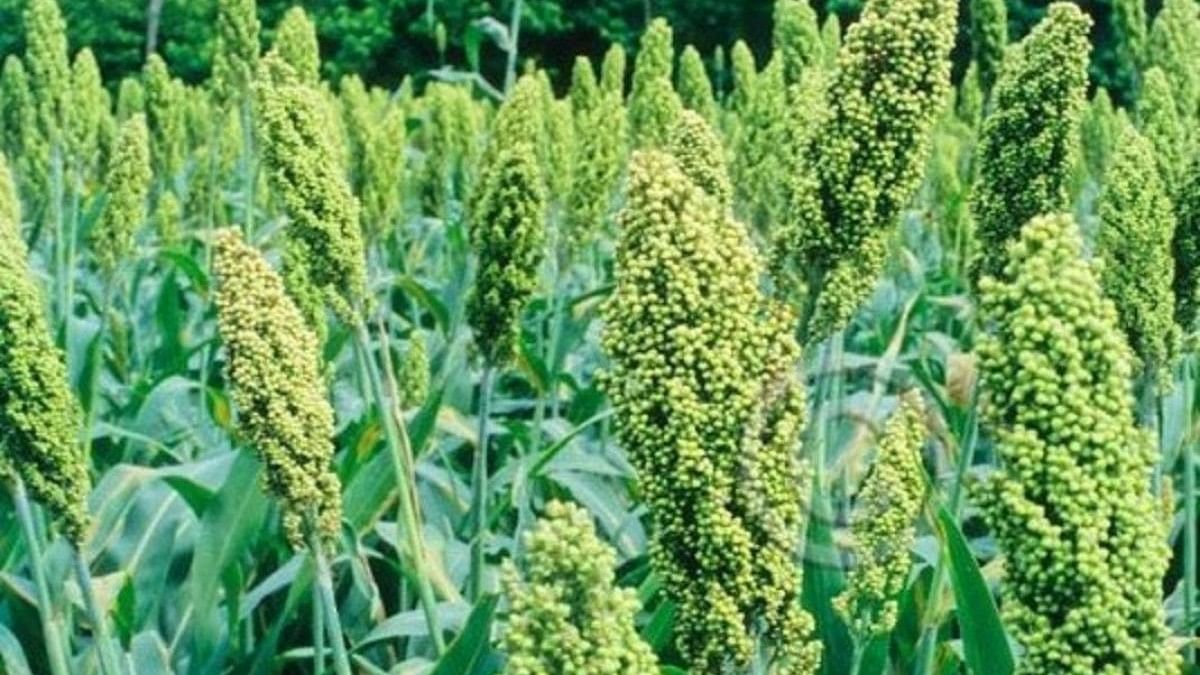
Image showing jowar cultivation.
Credit: DH Photo
Hubballi: Though jowar is the staple food of North-Karnataka region including Dharwad district, the area of jowar cultivation in the district and the region is coming down year by year, and the trend is expected to continue this time as well.
After Bengal gram, jowar is a major rabi crop (winter crop), along with wheat and safflower. Though jowar, even today, occupies the maximum cultivation area among cereals grown in the rabi season, it is losing sheen before the Bengal gram which is a rabi pulse cop.
While jowar cultivation area in the district is shrinking, the Bengal gram growing area is seeing an increase in recent years. However, after spoiling the kharif crops this time, the drought situation in the state has created uncertainty for all rabi crops also.
During the rabi season five years back, the jowar sowing area in the district, where most of the farm lands are rain-fed, used to be more than 45,000 hectares of land. Last year, it was less than 35,000 hectares of land, and the situation may almost be the same during the ongoing rabi season this time too. With an increase year by year, the normal sowing area of the Bengal gram has crossed 1.31 lakh hectares of land in the district, according to the data compiled by the Agriculture Department and Karnataka State Natural Disaster Monitoring Centre.
Same trend across region
Jowar is mainly grown in the north-interior Karnataka region, with Vijayapur district as the leading producer of jowar - which has the fame of being a healthy millet. The trend of shrinking jowar sowing area is not restricted to Dharwad district, but is seen across the state including Vijayapur district.
In 2017, jowar was sown on 10.97 lakh hectares of land in Karnataka, and it came down to 6.96 lakh hectares in 2022, marking a gradual decrease. Vijayapur district saw jowar sowing on 1.51 lakh hectares of land in 2018, and it was on 64,689 hectares last year. Lack of moisture in the soil threatening the survival of rabi crops, and less chances on rains during the rabi sowing this season have created a fear of less sowing or crop damage this rabi season also, after kharif loss.
Admitting that the jowar sowing area has come down gradually in recent years, Agriculture Department joint director M Kirankumar stated that the Bengal gram cultivation area has increased in the district, while jowar sowing area has come down.
"The old variety of jowar being grown here has less yield potential. Price for bengal gram is good, while growing it is also little easy compared to jowar. We have targetted jowar sowing on 38,000 hectare of land in the district this time, and sowing has taken place on around 7,000 hectare so far," he said.
According to Dharwad-based University of Agricultural Sciences (UAS) Agromet Department head R H Patil, the jowar crop not being so suitable for mechanised harvesting at present, and labour shortage are the main reasons for the shrinking jowar cultivation area, along with less yield.
Rabi sowing
With the commencement of the rabi season after the official completion of the south-west monsoon by September end, the sowing of rabi crops has begun, but anxiety is still there about their survival.
According to Kirankumar, the sowing of rabi crops has taken place on 70,000 hectares of land out of 2.03 lakh hectares targeted for rabi sowing in the district.
This is 20 per cent less compared to the sowing that had taken place in the same period last year. However, sowing may cross the target if good germination takes place and good rains come, as there is time for sowing till the second week of November, he added.
However, agricultural meteorology experts say sufficient rains required for good rabi crops are unlikely this time, and that can only happen if some cyclonic formation takes place.
They term rabi sowing as very risky this time, though sowing is going on in some places which have moisture due to recent rains or that have and irrigation facility.
With the looming drought situation, the average rainfall deficit in north-interior Karnataka (13 districts) in the rabi season so far (from October 1 to 18) is 88 per cent, with a minimum 76 per cent deficit in Belagavi district and a maximum 98 per cent deficit in Ballari district.